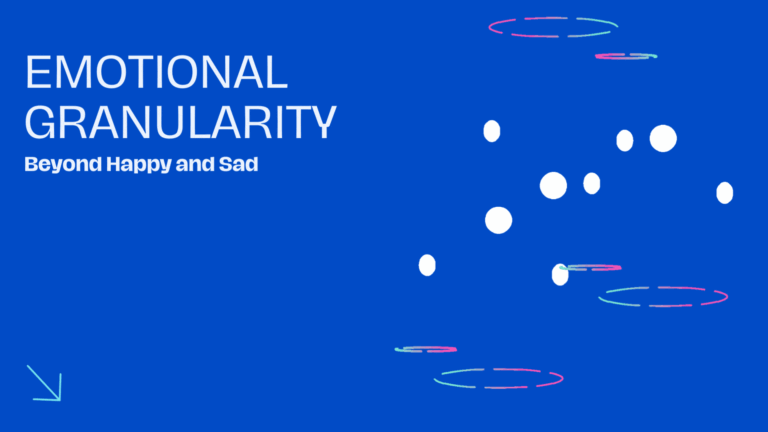Resource-talk questions and preferred-future description tools for envisioning a better future
Envisioning a better future is a fundamental aspect of human nature. We all have hopes and dreams for what lies ahead, and finding ways to make those dreams a reality is essential for personal growth and development. One approach that can be particularly helpful in this process is solution-focused therapy.
What is solution-focused therapy?
Solution-focused therapy, also known as solution-focused brief therapy (SFBT), is a therapeutic approach that focuses on finding solutions to problems rather than dwelling on the problems themselves. It is a goal-oriented approach that emphasizes the individual’s strengths and resources to create positive change.
Understanding the basics of solution-focused therapy
In solution-focused therapy, the counselor works with the client to identify the desired future and find ways to make that future a reality. Instead of analyzing the past and trying to uncover the root causes of problems, this approach focuses on finding practical solutions that can be implemented in the present and future.
How does solution-focused therapy differ from other approaches?
Unlike some other therapeutic approaches, solution-focused therapy is not interested in delving deep into the client’s past or exploring childhood traumas. Instead, it is focused on the here and now, with an emphasis on creating actionable steps towards the preferred future.
What are the key principles of solution-focused therapy?
There are several key principles that underpin solution-focused therapy. These include focusing on what is already working, setting clear goals, utilizing the client’s strengths and resources, and creating small steps towards positive change. By focusing on these principles, solution-focused therapy aims to empower individuals and guide them towards their desired future.
How can solution-focused therapy help in envisioning a better future?
Solution-focused therapy can be a valuable tool for envisioning a better future. By focusing on the preferred future rather than dwelling on the problems of the past, individuals can gain a clearer vision of what they want to achieve. This vision provides direction and motivation, making it easier to set goals and create action plans.
Exploring the role of solution-focused therapy in envisioning a better future
Solution-focused therapy encourages individuals to imagine and describe their preferred future in detail. By exploring what this future looks like, individuals can gain a deeper understanding of their aspirations and the steps they need to take to bring them to life.
How does solution-focused therapy focus on the preferred future?
A key aspect of solution-focused therapy is focusing on what is already working in an individual’s life. By identifying the times when the problem is not present or when things are going well, individuals can begin to understand how to create more of the preferred future. This approach helps shift the focus from the problem to finding solutions.
Using solution-focused therapy to set goals and create action plans
Solution-focused therapy emphasizes setting clear, realistic goals that are achievable in the short-term. By breaking down larger goals into smaller, actionable steps, individuals can make progress towards their preferred future. This approach encourages a sense of empowerment and motivates individuals to take control of their lives.
What are some practical tools for envisioning a better future?
In addition to solution-focused therapy, there are several practical tools that can be used to envision a better future. These tools can help individuals gain clarity about their goals and create a roadmap towards achieving them.
Utilizing resource-talk questions to envision a better future
Resource-talk questions are a powerful tool for envisioning a better future. These questions help individuals identify their strengths, skills, and resources, which can be used to overcome challenges and achieve their desired future. By asking questions such as “What are some times when the problem was not present?” and “What are some exceptions to the problem?”, individuals can tap into their past successes and find solutions.
How can preferred-future description questions aid in envisioning a better future?
Preferred-future description questions encourage individuals to describe their desired future in vivid detail. By asking questions like “What will your life look like when you have achieved your goals?” and “How will you know you are moving towards your desired future?”, individuals can create a clear vision of what they want and what steps they need to take to get there.
Applying solution-focused scaling to evaluate progress towards the preferred future
Solution-focused scaling is a technique that can be used to evaluate progress towards the preferred future. It involves asking individuals to rate their current position on a scale from 1 to 10, with 10 representing the preferred future. By tracking this scale over time, individuals can see their progress and make adjustments to their action plans.
How can solution-focused therapy be applied in an organizational setting?
Solution-focused therapy is not only beneficial for individuals but also for organizations. By implementing solution-focused techniques in an organizational setting, teams can enhance their strengths and resources, make effective decisions, and work towards a common vision of the future.
Implementing solution-focused therapy in organizational counseling
Solution-focused therapy can be applied in organizational counseling to help teams overcome challenges and improve their performance. By focusing on the strengths and resources within the organization, counselors can guide teams towards solutions and empower them to create positive change.
Utilizing solution-focused techniques for decision-making in organizations
Solution-focused techniques can also be used for decision-making in organizations. By asking solution-focused questions such as “What are some possible solutions to this problem?” and “What steps can we take to implement these solutions?”, teams can foster creative thinking and find innovative solutions.
How can solution-focused therapy enhance strengths and resources within an organization?
Solution-focused therapy helps organizations identify and leverage their strengths and resources. By focusing on what is already working well within the organization, teams can build on these strengths and find solutions to challenges. This approach encourages a positive and solution-oriented mindset within the organization.
Where can I find additional resources on solution-focused therapy and envisioning a better future?
If you are interested in learning more about solution-focused therapy and how it can help you envision a better future, there are several resources available.
Recommended articles on solution-focused therapy and its applications
Many articles have been written on solution-focused therapy and its applications in various settings. These articles provide insights, case studies, and practical tips for implementing this therapeutic approach.
Exploring books by Steve de Shazer and Insoo Kim Berg on solution-focused therapy
Steve de Shazer and Insoo Kim Berg are two pioneers in the field of solution-focused therapy. Their books, such as “Solution-Focused Brief Therapy: A Handbook of Evidence-Based Practice” and “Building Solutions in Child Protective Services”, provide valuable guidance and resources for professionals and individuals interested in this approach.
Are there any online questionnaires available to assess future envisioning skills?
Online questionnaires can be a useful tool for assessing and developing future envisioning skills. These questionnaires provide insights into an individual’s strengths, areas for improvement, and can help guide the goal-setting process.
Q: What is the solution-focused approach?
A: The solution-focused approach is a therapeutic approach that focuses on finding solutions rather than dwelling on problems. It emphasizes the client’s strengths and resources to help them achieve their preferred future.
Q: How can the solution-focused approach be applied in family therapy?
A: In family therapy, the solution-focused approach can be used to help families identify their strengths and resources and use them to solve problems. It emphasizes collaboration, positive communication, and goal setting.
Q: What is the Miracle Question?
A: The Miracle Question is a common technique used in solution-focused therapy. It asks the client to imagine a future where their problem is solved miraculously. This helps the client envision their preferred future and the steps needed to achieve it.
Q: What is Solution-Focused Brief Therapy (SFBT)?
A: Solution-Focused Brief Therapy (SFBT) is a type of therapy that utilizes the solution-focused approach. It is a brief and goal-oriented therapy that focuses on finding practical solutions to problems.
Q: How can asking questions help in finding solutions?
A: Asking solution-focused questions can help individuals and families identify their strengths, resources, and previous successes in solving problems. These questions can facilitate brainstorming and guide the client towards finding their own solutions.
Q: What types of questions are used in the solution-focused approach?
A: Solution-focused questions are typically future-oriented and focus on the client’s goals and preferred future. They can include questions about exceptions to the problem, previous successes, and what the client wants to achieve in the future.
Q: How can the solution-focused approach help individuals create a vision for the future?
A: The solution-focused approach helps individuals create a vision for the future by identifying their strengths, resources, and what is already working well in their lives. This vision can then be used as a guide for setting goals and making positive changes.
Q: Can the solution-focused approach help solve specific problems?
A: Yes, the solution-focused approach can be used to solve specific problems. By focusing on the desired future and the steps needed to get there, individuals can identify practical solutions and take action to solve their problems.
Q: Is the solution-focused approach effective for problem-solving?
A: Yes, the solution-focused approach has been found to be effective in problem-solving. It encourages individuals to focus on their strengths, resources, and what is already working well in their lives, which can lead to effective problem-solving strategies.
Q: Where can I find resources and articles related to the solution-focused approach?
A: There are many resources and articles available online that provide information and guidance on the solution-focused approach. You can search for keywords such as “solution-focused therapy” or “solution-focused brief therapy” to find relevant materials.












